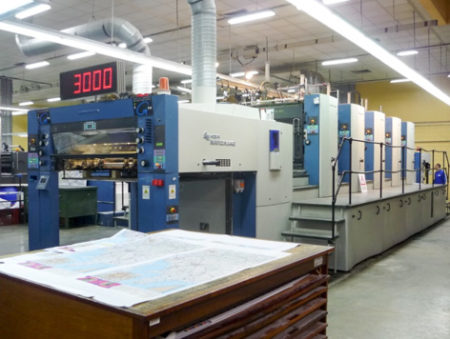For those of you new to our blog, Welcome. In today’s short, I continue sharing my journey as an independent author and publisher. If you’ve been thinking about writing a book, we hope this series will be of encouragement and of use to you. Enjoy!

So now I’m at the point where Roy (the book designer) has been hired, the images have been picked out for each of the stops, and the manuscripts of the two books (Where Did They Put the Guillotine?—Walking Tours of Revolutionary Paris: 1789–1793) are completed. What’s my next step? Finding a printer.
“What are your non-negotiable issues?”
As we began thinking about the printing process, Stephanie came to me with the question, “What are your non-negotiable issues?” In other words, what issues would preclude me from doing business with any one particular printer? An example might be that I MUST have an 8.0” by 8.0” trim size (i.e., dimension of the book) and one of the potential printers can’t do that size. Is that a non-negotiable issue that would eliminate the printer from being considered?
I thought about her question. Now I really don’t know enough about the publishing industry to get down in the weeds and analyze this thoroughly. But there were two issues I knew I could not compromise on.
Own the rights to your book!
The first one is I would never allow a third party to own the rights to my books, either on a temporary or permanent basis. After I wrote and published The Mindset of Networking®, a marketing professor at MTSU came to me and suggested I submit the book to The University of Michigan Press. What I found out was I would have to sign the rights over to that publisher. Even though this arrangement would provide an incredible distribution engine, I wouldn’t do it. I also found out that some (not all) printers would include owning the rights to the book in their contracts.
Refuse to compromise on the quality.
The second non-negotiable issue for these walking tour books is quality. I refuse to compromise on the quality of the end product—the book. If my name is going to be on it, then I want something I can be proud of. This issue came into play when deciding whether we go with an offset or a print-on-demand (POD) printer. Our research told us that while a POD product was good quality, we could not be assured that it would be as good as an offset product. Therefore, by going with an offset printer, the trade-off for quality was that I would have to carry inventory (or find someone to carry the inventory and perform the fulfillment of product).
Once you figure out the really important stuff, the details become much easier. As we identified the quality issue, it was easy to eliminate POD and focus on the offset printers. We have several printers identified. I begin my journey this morning by visiting a Nashville based printer (did you know that Nashville is famous for its printing industry—some companies here date back to before the Civil War?).
The trim size of the books will be 8×8. That was negotiable. Just thought you’d like to know.
Do we have a lot of stories? Of course we do. I’m looking forward to sharing these with you. Please continue to visit our blog and perhaps subscribe so that you don’t miss out on the most recent blog posts.
Thanks so much for following my blog and my little journey through this incredibly interesting process of writing a series of niche historical travel books and then getting the bloody things published.
-Stew
Please note that I do not and will not take compensation from individuals or companies I mention or promote in my blog.
Are you following us on Facebook and Twitter?
Copyright © 2014 Stew Ross
